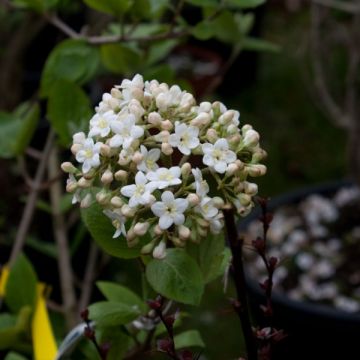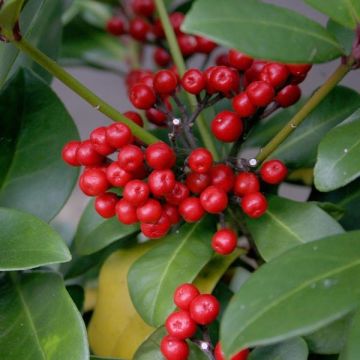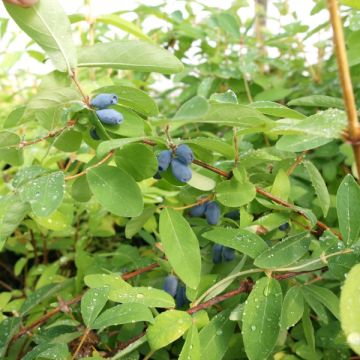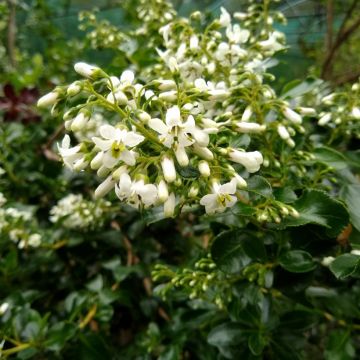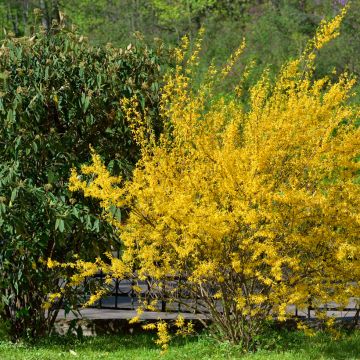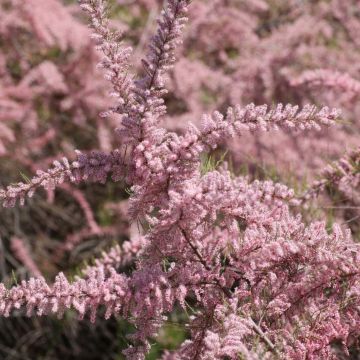

Viburnum lantana Aureum - Wayfaring tree
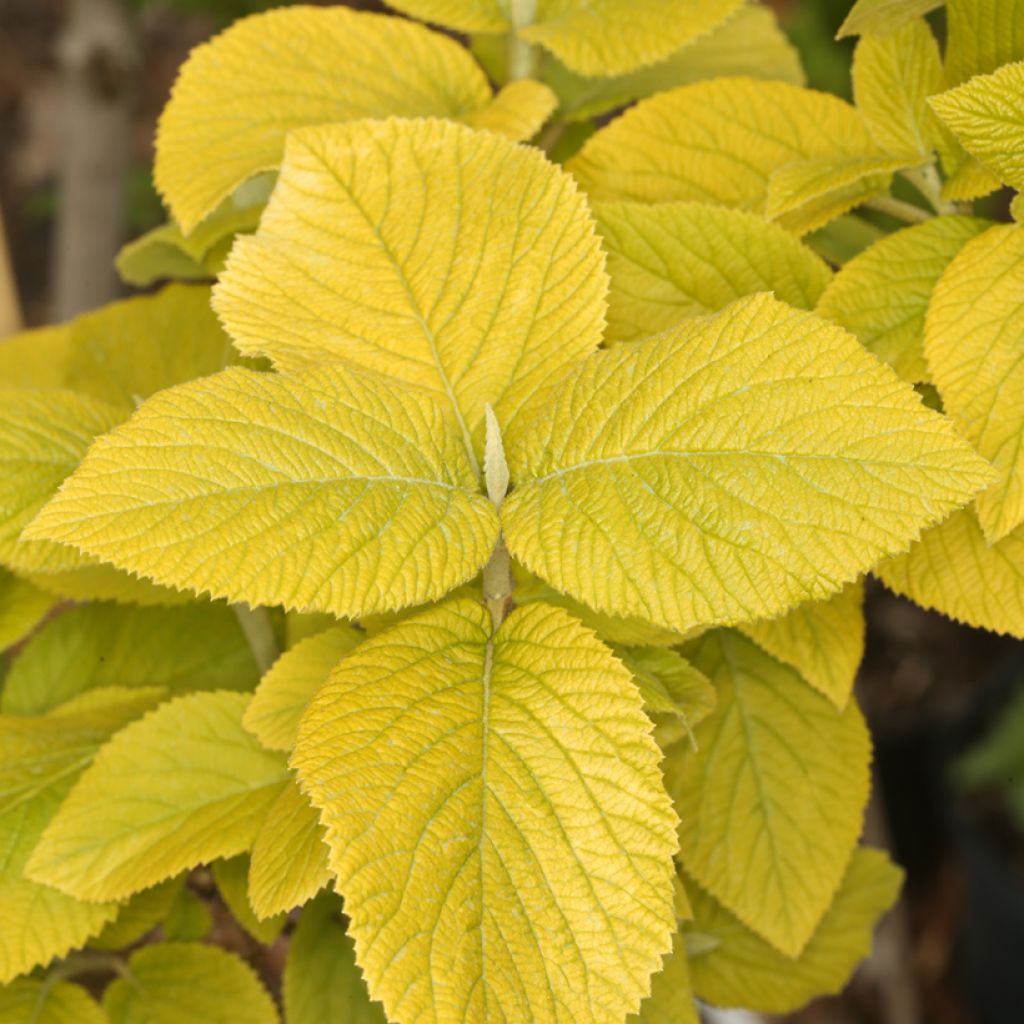

Viburnum lantana Aureum - Wayfaring tree
Viburnum lantana Aureum - Wayfaring tree
Viburnum lantana Aureum
Wayfaring tree, Wayfarer, Viburnum.
This item cannot be shipped to the selected country
Delivery charge from €5.90
More information
Schedule delivery date,
and select date in basket
This plant carries a 24 months recovery warranty
More information
We guarantee the quality of our plants for a full growing cycle, and will replace at our expense any plant that fails to recover under normal climatic and planting conditions.
From €5.90 for pickup delivery and €6.90 for home delivery
Express home delivery from €8.90.
Does this plant fit my garden?
Set up your Plantfit profile →
Description
Viburnum lantana 'Aureum' is a unique form of the native wayfaring tree with golden foliage. This variety has the same qualities as the wild form, but it is slightly less vigorous. However, it forms a much brighter, more refined bush, ideal for adding charm to a rural scene. Its beautiful golden foliage is adorned with numerous cream-white flowers in spring, followed by decorative fruiting. This wayfaring tree is not only suitable for most climates, but it is also decorative and useful for the small fauna of the garden. It is an excellent shrub for limestone soils.
Viburnum lantana 'Aureum' is a selection from the German nursery Späth dating back to 1921. The species, which is known as wayfaring tree, manciana viburnum, or cochène depending on the region, is native to central and southern Europe, western Asia, and North Africa. It is a deciduous shrub that grows in light woodland and scrubland, often on limestone soil at altitudes below 1600 m. All wayfaring trees are now classified in the viburnum family.
The golden wayfaring tree, which grows slower than the wild species, reaches about 2 m in all directions. It is a bushy, well-branched shrub with a generally rounded habit. The deciduous foliage is golden yellow in spring and gradually takes on greenish hues over the weeks. This yellow colour will be more enduring if the plant is exposed to partial shade or shade. The large leaves of this wayfaring tree are pendulous, thick, and rough, with an oval shape and finely toothed margins, and the underside is covered in downy hairs. Each leaf measures up to 10 cm long and 6 cm wide. The autumn colours, often splendid, vary from year to year: they are likely dependent on climatic conditions and soil nature. The flowering from April to June, is abundant and nectar-rich. It produces rounded and flattened, 4 to 10 cm diameter clusters of 5 mm white flowers with protruding yellow stamens. This fragrant flowering is followed by an unusual fruiting, which can be enjoyed from September to December. The fruits are spherical, measure 8 mm in diameter, and turn from pink to red and then black at maturity. They attract birds, which will brighten up the shortest and dreariest days of the year. The young branches of the wayfaring tree are woolly in appearance, flexible, and covered in small star-shaped hairs. Over time, they take on a more greyish colour.
Viburnum lantana 'Aureum' is a very hardy shrub that can adapt to various growing conditions from north to south. It can be used as a specimen plant, in informal hedges, in shrub borders, or in groves. Plant it in a high-traffic area to enjoy its golden foliage and fragrance. This variety will look stunning alongside shrubs with dark, purple, or black foliage. It can also be paired with other native plants such as the common medlar, the guelder rose, the spindle tree, hazelnut trees, or hawthorns.
Report an error about the product description
Plant habit
Flowering
Foliage
Botanical data
Viburnum
lantana
Aureum
Viburnaceae
Wayfaring tree, Wayfarer, Viburnum.
Western Europe
Other Viburnum
Planting and care
Viburnum lantana 'Aureum' thrives in sunny or semi-shaded locations, but its foliage will retain its yellow colour longer if the plant is sheltered from intense sunlight. Otherwise, it will produce more flowers, but its foliage will quickly turn light green. Plant it from March to June and from September to December (excluding frost periods), in ordinary, fairly deep soil, preferably alkaline to neutral. Provide drainage in compact soils (mix gravel or river sand with your garden soil) and enrich with compost over several years if your substrate seems particularly poor and rocky. Once well-rooted, this wayfaring tree can tolerate moderate summer drought. Prune it lightly after flowering by removing faded flowers to maintain a compact shape.
Planting period
Intended location
Care
This item has not been reviewed yet - be the first to leave a review about it.
Hedge shrubs
Haven't found what you were looking for?
Hardiness is the lowest winter temperature a plant can endure without suffering serious damage or even dying. However, hardiness is affected by location (a sheltered area, such as a patio), protection (winter cover) and soil type (hardiness is improved by well-drained soil).

Photo Sharing Terms & Conditions
In order to encourage gardeners to interact and share their experiences, Promesse de fleurs offers various media enabling content to be uploaded onto its Site - in particular via the ‘Photo sharing’ module.
The User agrees to refrain from:
- Posting any content that is illegal, prejudicial, insulting, racist, inciteful to hatred, revisionist, contrary to public decency, that infringes on privacy or on the privacy rights of third parties, in particular the publicity rights of persons and goods, intellectual property rights, or the right to privacy.
- Submitting content on behalf of a third party;
- Impersonate the identity of a third party and/or publish any personal information about a third party;
In general, the User undertakes to refrain from any unethical behaviour.
All Content (in particular text, comments, files, images, photos, videos, creative works, etc.), which may be subject to property or intellectual property rights, image or other private rights, shall remain the property of the User, subject to the limited rights granted by the terms of the licence granted by Promesse de fleurs as stated below. Users are at liberty to publish or not to publish such Content on the Site, notably via the ‘Photo Sharing’ facility, and accept that this Content shall be made public and freely accessible, notably on the Internet.
Users further acknowledge, undertake to have ,and guarantee that they hold all necessary rights and permissions to publish such material on the Site, in particular with regard to the legislation in force pertaining to any privacy, property, intellectual property, image, or contractual rights, or rights of any other nature. By publishing such Content on the Site, Users acknowledge accepting full liability as publishers of the Content within the meaning of the law, and grant Promesse de fleurs, free of charge, an inclusive, worldwide licence for the said Content for the entire duration of its publication, including all reproduction, representation, up/downloading, displaying, performing, transmission, and storage rights.
Users also grant permission for their name to be linked to the Content and accept that this link may not always be made available.
By engaging in posting material, Users consent to their Content becoming automatically accessible on the Internet, in particular on other sites and/or blogs and/or web pages of the Promesse de fleurs site, including in particular social pages and the Promesse de fleurs catalogue.
Users may secure the removal of entrusted content free of charge by issuing a simple request via our contact form.
The flowering period indicated on our website applies to countries and regions located in USDA zone 8 (France, the United Kingdom, Ireland, the Netherlands, etc.)
It will vary according to where you live:
- In zones 9 to 10 (Italy, Spain, Greece, etc.), flowering will occur about 2 to 4 weeks earlier.
- In zones 6 to 7 (Germany, Poland, Slovenia, and lower mountainous regions), flowering will be delayed by 2 to 3 weeks.
- In zone 5 (Central Europe, Scandinavia), blooming will be delayed by 3 to 5 weeks.
In temperate climates, pruning of spring-flowering shrubs (forsythia, spireas, etc.) should be done just after flowering.
Pruning of summer-flowering shrubs (Indian Lilac, Perovskia, etc.) can be done in winter or spring.
In cold regions as well as with frost-sensitive plants, avoid pruning too early when severe frosts may still occur.
The planting period indicated on our website applies to countries and regions located in USDA zone 8 (France, United Kingdom, Ireland, Netherlands).
It will vary according to where you live:
- In Mediterranean zones (Marseille, Madrid, Milan, etc.), autumn and winter are the best planting periods.
- In continental zones (Strasbourg, Munich, Vienna, etc.), delay planting by 2 to 3 weeks in spring and bring it forward by 2 to 4 weeks in autumn.
- In mountainous regions (the Alps, Pyrenees, Carpathians, etc.), it is best to plant in late spring (May-June) or late summer (August-September).
The harvesting period indicated on our website applies to countries and regions in USDA zone 8 (France, England, Ireland, the Netherlands).
In colder areas (Scandinavia, Poland, Austria...) fruit and vegetable harvests are likely to be delayed by 3-4 weeks.
In warmer areas (Italy, Spain, Greece, etc.), harvesting will probably take place earlier, depending on weather conditions.
The sowing periods indicated on our website apply to countries and regions within USDA Zone 8 (France, UK, Ireland, Netherlands).
In colder areas (Scandinavia, Poland, Austria...), delay any outdoor sowing by 3-4 weeks, or sow under glass.
In warmer climes (Italy, Spain, Greece, etc.), bring outdoor sowing forward by a few weeks.






































